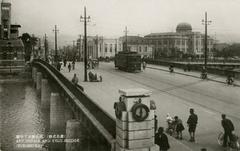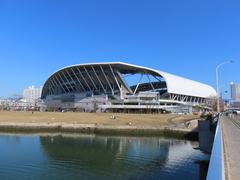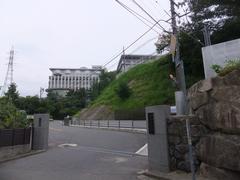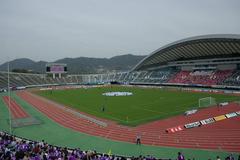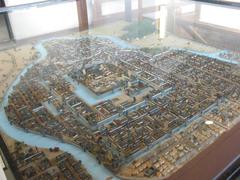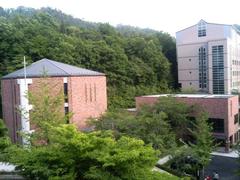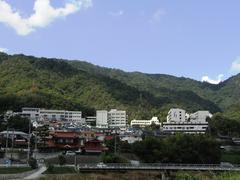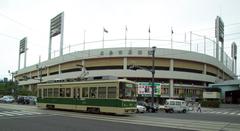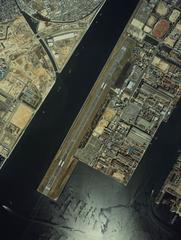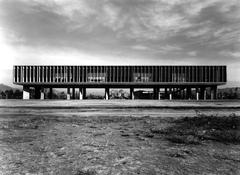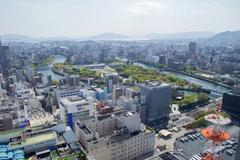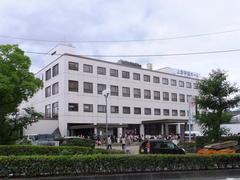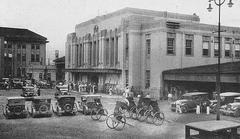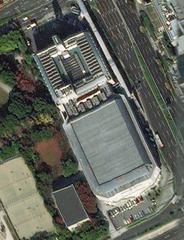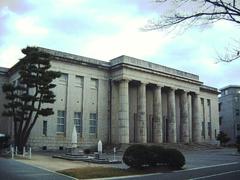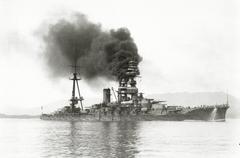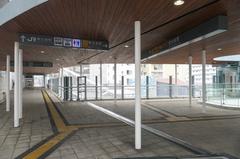
Tenjingawa Station Visiting Hours, Tickets, and Hiroshima Historical Sites Guide
Date: 04/07/2025
Introduction
Tenjingawa Station (天神川駅) is a pivotal gateway in Hiroshima’s railway network, serving as a modern transit hub on the JR Sanyō Main Line and the Kure Line. Opened in 2004, the station represents Hiroshima’s postwar reconstruction and ongoing urban development, located approximately 3 kilometers east of Hiroshima’s main station. With robust accessibility features and seamless multimodal connections, Tenjingawa Station is essential for daily commuters, tourists, and anyone exploring the rich history and culture of Hiroshima.
This guide provides an in-depth look at Tenjingawa Station, including its layout, operating hours, ticketing options, accessibility, nearby attractions, and practical travel tips. Whether you’re planning to visit Hiroshima Peace Memorial Park, Hiroshima Castle, or Miyajima Island, understanding Tenjingawa’s facilities and services will help you navigate Hiroshima with ease.
For the latest updates, consult the JR West official site and Hiroshima city’s transportation overview.
Table of Contents
- Historical Context of Hiroshima’s Railway Development
- The Emergence and Role of Tenjingawa Station
- Visiting Hours and Ticket Information
- Station Layout and Facilities
- Accessibility Features
- Nearby Attractions and Travel Tips
- Cultural Etiquette for Travelers
- Best Visiting Times & Seasonal Considerations
- Frequently Asked Questions (FAQ)
- Summary and Final Tips
- Sources and Further Reading
Historical Context of Hiroshima’s Railway Development
Hiroshima’s transformation from a castle town to a thriving urban and industrial hub was propelled by the development of its railway network in the late 19th and early 20th centuries. The Sanyō Railroad, completed in the 1890s, connected Hiroshima to major cities like Kobe and Shimonoseki, facilitating economic growth and regional integration (aboutjapan.japansociety.org). The port of Ujina further enhanced Hiroshima’s strategic importance as a transport and industrial center.
The Emergence and Role of Tenjingawa Station
Inaugurated on March 13, 2004, Tenjingawa Station was developed by JR West to meet the growing transportation needs of Hiroshima’s expanding eastern districts (JR West official site). Positioned about 3 km from Hiroshima Station, it features strong links to local bus routes and major roadways, making it a key node in Hiroshima’s transportation network (city.hiroshima.lg.jp).
Visiting Hours and Ticket Information
- Station Operating Hours: Tenjingawa Station operates daily from approximately 5:00 AM to midnight, in line with the JR Sanyō Main Line and Kure Line schedules. First and last train times may vary by day and destination (JR West Official Site).
- Ticketing: Purchase tickets at automated vending machines or at the staffed ticket office. IC cards such as ICOCA and Suica are accepted, providing convenience and compatibility across most Japanese transport networks.
- Typical Fares: A one-way ticket from Tenjingawa to Hiroshima Station costs around 170–200 yen (Japan Travel Navitime).
- Rail Passes: JR West offers various regional rail passes that may include travel through Tenjingawa at discounted rates. Check the JR West ticketing website for up-to-date fare information and available passes.
Station Layout and Facilities
Platform Configuration
- Platforms: Two island platforms serve four tracks, ensuring smooth transfers between local and rapid trains. An elevated concourse connects platforms, housing ticket gates and passenger services (Japan Guide).
- Entrances/Exits: Main entrance is on the north side, with a secondary south entrance connecting to residential and commercial areas. Both are marked in Japanese and English, and tactile paving guides visually impaired travelers.
Amenities
- Ticketing: Automated machines (Japanese/English) and a staffed office are available for ticket purchases, fare adjustments, and seat reservations.
- Waiting Areas: Climate-controlled seating, charging stations, and a lounge with vending machines and free Wi-Fi.
- Restrooms: Modern facilities include multipurpose toilets with handrails, diaper-changing tables, and ostomate-friendly features.
- Retail & Dining: Convenience stores, kiosks, and vending machines provide snacks and essentials. Nearby eateries serve local specialties; Hiroshima Station’s ekie shopping complex is just a short train ride away (Train Station World).
- Luggage Storage: Coin lockers of various sizes and staff assistance for oversized or long-term storage.
- Customer Service: Travel information and lost & found support, with English-speaking staff during peak seasons.
Accessibility Features
Tenjingawa Station is designed for universal accessibility:
- Barrier-Free Design: Elevators, escalators, ramps, and tactile paving ensure step-free access throughout the station.
- Wheelchair Accessibility: Elevator access to all platforms, wide ticket gates, and portable ramps provided by staff. Trains feature wheelchair spaces and priority seating.
- Visual & Auditory Assistance: Braille signage, yellow tactile paving, and audible announcements in Japanese and English.
- Family-Friendly Facilities: Multipurpose toilets with child seats, diaper-changing tables, and accessible emergency call buttons.
- Accessible Transport Connections: Local bus routes include non-step buses; wheelchair-accessible taxis are available by reservation.
- Parking: Accessible parking and drop-off zones are close to the main entrance.
Nearby Attractions and Travel Tips
Tenjingawa Station is an excellent starting point for exploring Hiroshima:
- Hiroshima Peace Memorial Park: A UNESCO World Heritage Site dedicated to the victims of the atomic bombing, with museums and memorials (city.hiroshima.lg.jp).
- Hiroshima Castle: Reconstructed after World War II, featuring a museum and picturesque grounds.
- Shukkeien Garden: A beautifully landscaped Japanese garden near Hiroshima Castle.
- Mazda Stadium: Popular for baseball games and events.
- Miyajima Island: Renowned for Itsukushima Shrine and scenic views, accessible via ferry from Hiroshima Port.
Travel Tips:
- Use IC cards for seamless transfers on trains, buses, and trams.
- Lockers are available for luggage storage; staff can assist with oversized baggage.
- Download the Audiala app for real-time train updates and travel support.
Cultural Etiquette for Travelers
- On Public Transport: Keep conversations quiet, line up in marked areas, use priority seating appropriately, and store luggage properly.
- General Etiquette: Bow as a greeting, remove shoes when entering traditional spaces, use “Sumimasen” to get attention, respect photography restrictions, and consider bringing a small gift when meeting hosts.
Best Visiting Times & Seasonal Considerations
- Spring (March–May): Cherry blossoms and mild weather.
- Summer (June–August): Hot and humid with rainy spells; August 6 sees the Peace Memorial Ceremony.
- Autumn (September–November): Pleasant climate, autumn foliage, and festivals.
- Winter (December–February): Cooler temperatures, fewer crowds.
Tips:
Visit during shoulder seasons (late May, early September) for fewer tourists. Prepare for rain in early summer and monitor typhoon advisories in late summer.
Frequently Asked Questions (FAQ)
Q: What are Tenjingawa Station’s operating hours?
A: The station is open from around 5:00 AM to midnight. Check the JR West site for specific train schedules.
Q: How do I buy tickets?
A: Use automated machines or the staffed office. IC cards like ICOCA and Suica are recommended for convenience.
Q: Is the station accessible for disabled visitors?
A: Yes, with elevators, ramps, tactile paving, and accessible restrooms.
Q: Can I store luggage at the station?
A: Coin lockers of various sizes are available; staff assist with larger items.
Q: Are guided tours available?
A: While the station itself doesn’t offer tours, guided tours to Hiroshima’s historical sites can be booked via local agencies.
Summary and Final Tips
Tenjingawa Station stands as a symbol of Hiroshima’s resilience and innovation, providing comprehensive facilities, accessibility, and excellent connectivity to historical and cultural landmarks. Its integration with local transportation and user-friendly amenities make it ideal for both visitors and daily commuters.
For up-to-date travel information, ticket options, and personalized assistance, download the Audiala app and consult official resources. Plan your trip around local customs, seasonal highlights, and Hiroshima’s vibrant history for a memorable experience.
Visuals
Sources and Further Reading
- JR West official site
- Hiroshima city’s transportation overview
- aboutjapan.japansociety.org
- Japan Guide
- Train Station World
- Japan Travel Navitime
- Alpaca Travel

